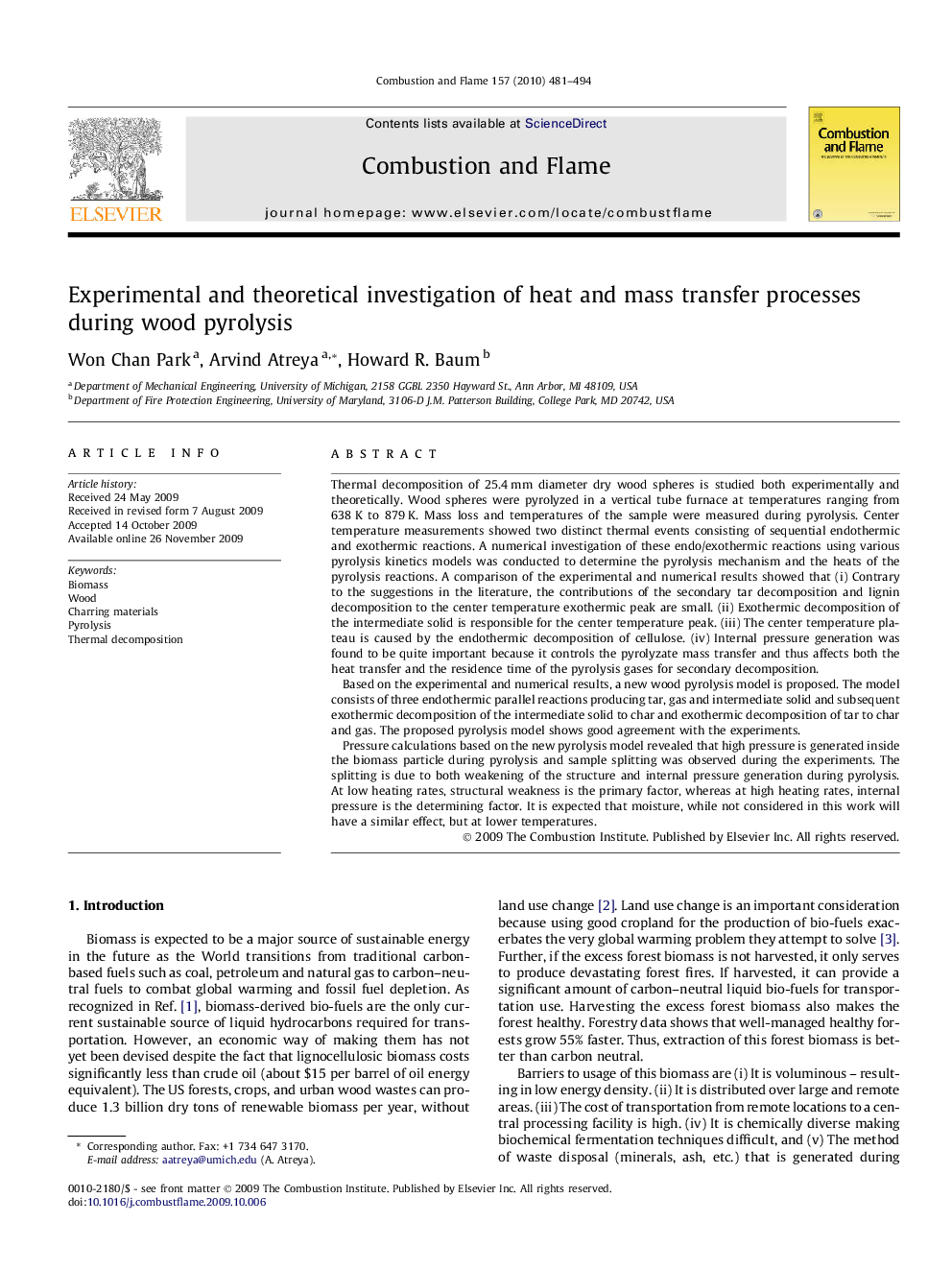| Article ID | Journal | Published Year | Pages | File Type |
|---|---|---|---|---|
| 169679 | Combustion and Flame | 2010 | 14 Pages |
Thermal decomposition of 25.4 mm diameter dry wood spheres is studied both experimentally and theoretically. Wood spheres were pyrolyzed in a vertical tube furnace at temperatures ranging from 638 K to 879 K. Mass loss and temperatures of the sample were measured during pyrolysis. Center temperature measurements showed two distinct thermal events consisting of sequential endothermic and exothermic reactions. A numerical investigation of these endo/exothermic reactions using various pyrolysis kinetics models was conducted to determine the pyrolysis mechanism and the heats of the pyrolysis reactions. A comparison of the experimental and numerical results showed that (i) Contrary to the suggestions in the literature, the contributions of the secondary tar decomposition and lignin decomposition to the center temperature exothermic peak are small. (ii) Exothermic decomposition of the intermediate solid is responsible for the center temperature peak. (iii) The center temperature plateau is caused by the endothermic decomposition of cellulose. (iv) Internal pressure generation was found to be quite important because it controls the pyrolyzate mass transfer and thus affects both the heat transfer and the residence time of the pyrolysis gases for secondary decomposition.Based on the experimental and numerical results, a new wood pyrolysis model is proposed. The model consists of three endothermic parallel reactions producing tar, gas and intermediate solid and subsequent exothermic decomposition of the intermediate solid to char and exothermic decomposition of tar to char and gas. The proposed pyrolysis model shows good agreement with the experiments.Pressure calculations based on the new pyrolysis model revealed that high pressure is generated inside the biomass particle during pyrolysis and sample splitting was observed during the experiments. The splitting is due to both weakening of the structure and internal pressure generation during pyrolysis. At low heating rates, structural weakness is the primary factor, whereas at high heating rates, internal pressure is the determining factor. It is expected that moisture, while not considered in this work will have a similar effect, but at lower temperatures.
